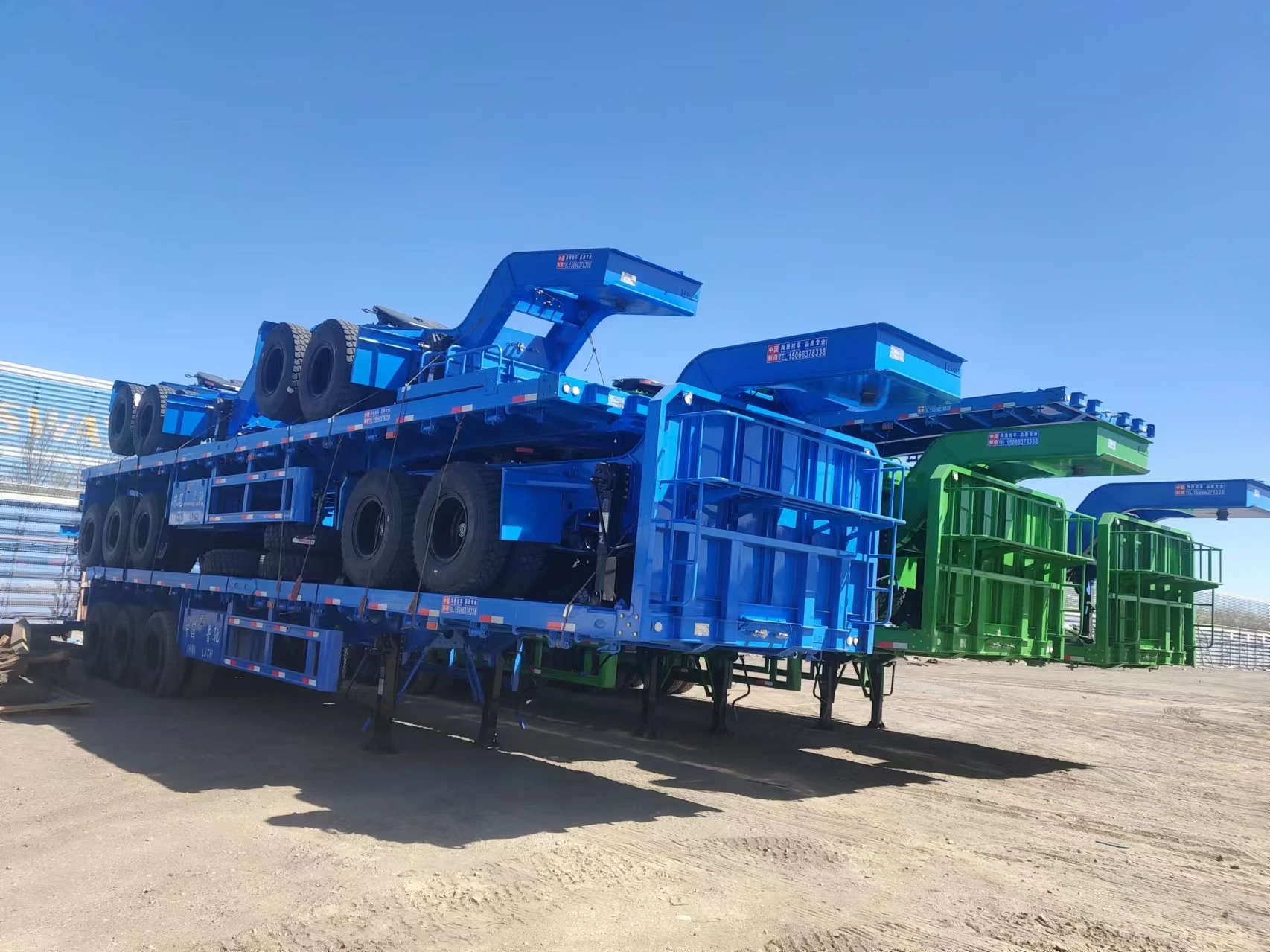40-foot flatbed semi trailer specifications and best uses for transportation needs
The Versatility and Importance of the 40ft Flatbed Semi-Trailer
In the world of transportation and logistics, the semi-trailer plays a crucial role, and among them, the 40ft flatbed semi-trailer stands out for its versatility and efficiency. This type of trailer is widely used across various industries due to its design, which allows for easy loading and unloading of cargo. Understanding the features, advantages, and applications of the 40ft flatbed semi-trailer is essential for businesses aiming to optimize their shipping processes.
Design and Features
The 40ft flatbed semi-trailer is characterized by its open deck design, which has no sides or roof, making it an excellent choice for transporting oversized and heavy cargo. This design provides maximum accessibility for loading from any angle, whether by fork-lift, crane, or human labor. The trailer is typically constructed with a sturdy steel frame and features a wooden or composite floor that can withstand heavy loads. Additionally, flatbed trailers often come equipped with tie-down points, allowing cargo to be securely fastened during transit, which is essential for maintaining safety on the road.
Advantages
One of the primary advantages of using a 40ft flatbed semi-trailer is its flexibility. Unlike enclosed trailers, flatbeds can carry a wide array of commodities, including construction equipment, vehicles, lumber, pipes, and other bulky items. This versatility can significantly benefit businesses with varied shipping needs, allowing for a streamlined transportation process.
Another advantage is ease of loading and unloading. The absence of sides and a roof means that cranes and forklifts can easily maneuver around the cargo, reducing loading times and improving overall efficiency. This is particularly important for businesses that operate on tight schedules or need to transport goods quickly.
Moreover, flatbed trailers tend to have higher weight capacities. With the ability to carry substantial loads, companies can make fewer trips, reducing fuel costs and improving the overall efficiency of their logistics operations.
40ft flatbed semi trailer

Applications
The applications of the 40ft flatbed semi-trailer are vast. In the construction industry, these trailers are essential for transporting heavy machinery and building materials, such as cement blocks and steel beams. Their ability to handle oversized loads makes them invaluable in construction projects where timing and reliability are crucial.
In the automotive industry, flatbed semi-trailers are used to transport vehicles between dealerships or to deliver them from manufacturers. The open platform allows easy access and secure transportation of cars, trucks, and other vehicles, minimizing the risk of damage.
Additionally, flatbed trailers play a vital role in the agricultural sector, transporting large equipment and harvested crops. Farmers and agricultural suppliers rely on flatbeds to move products efficiently from fields to markets.
Conclusion
The 40ft flatbed semi-trailer is a cornerstone of the logistics and transportation industry. Its unique design offers unparalleled flexibility and efficiency, making it suitable for various applications, from construction to agriculture. As businesses continue to seek ways to optimize their operations and reduce costs, the demand for reliable flatbed trailers will only grow.
In a rapidly changing economic landscape, companies that leverage the advantages of the 40ft flatbed semi-trailer can enhance their operational efficiency, better respond to customer needs, and maintain a competitive edge in the market. Whether for transporting heavy machinery, vehicles, or bulk materials, flatbed trailers remain an indispensable asset in the logistics toolkit, shaping the future of freight transportation.
-
SINOTRUK HOWO 84 Electric Dump Truck for Eco-Friendly Heavy HaulingNewsJul.26,2025
-
The Fast 16-Gear Manual Transmission Assembly for Heavy TrucksNewsJul.25,2025
-
Mercedes Benz Actros 1848 42 Tractor Truck for Sale - Reliable PerformanceNewsJul.24,2025
-
High-Quality Water Pump Assembly for Sinotruk Trucks – Durable & ReliableNewsJul.23,2025
-
Premium Truck Engine Antifreeze Coolant Fluid for Heavy Duty VehiclesNewsJul.22,2025
-
FOTON View G7 Mini Bus: Affordable & Spacious TransportNewsJul.22,2025
Popular products

























